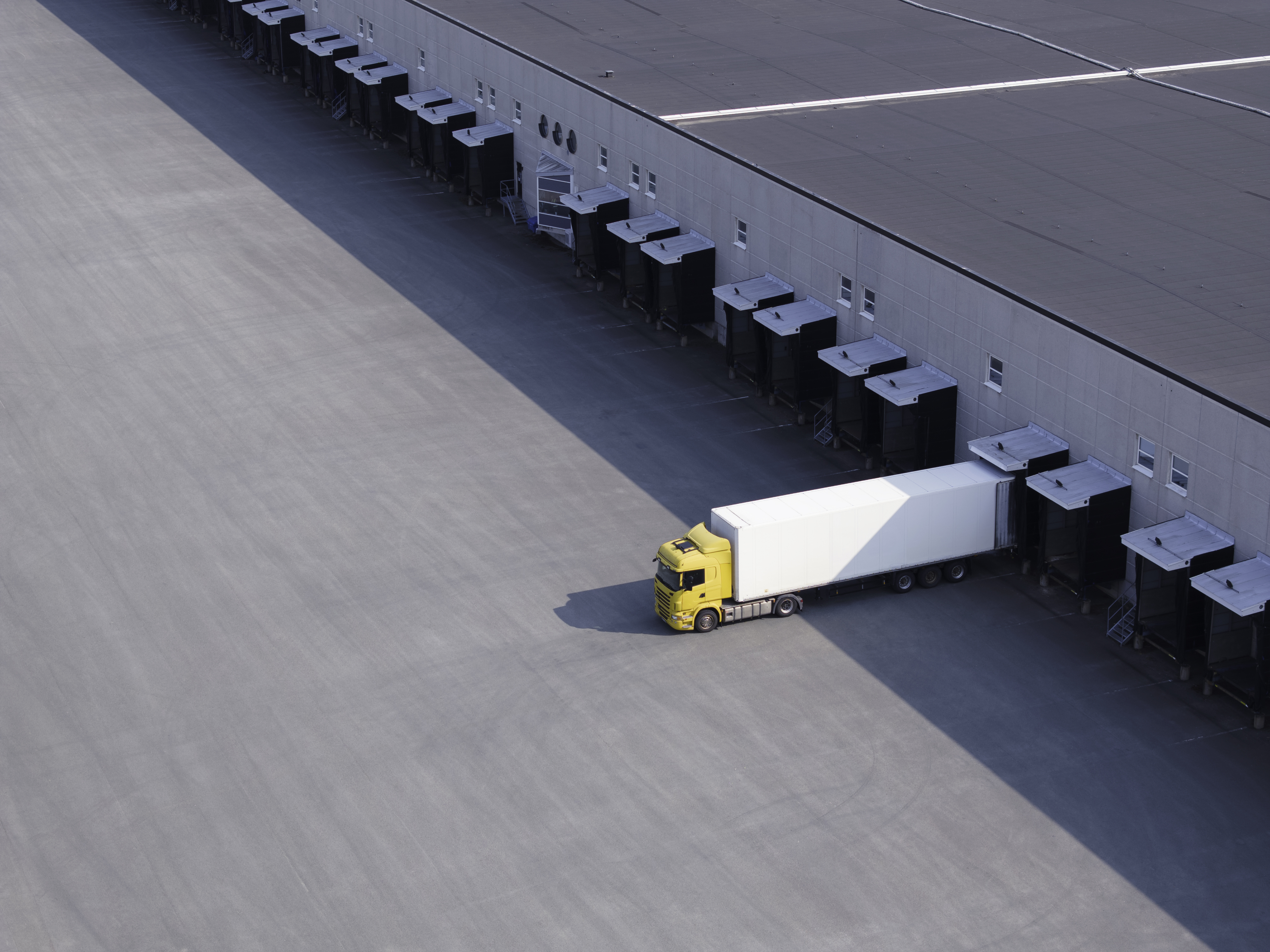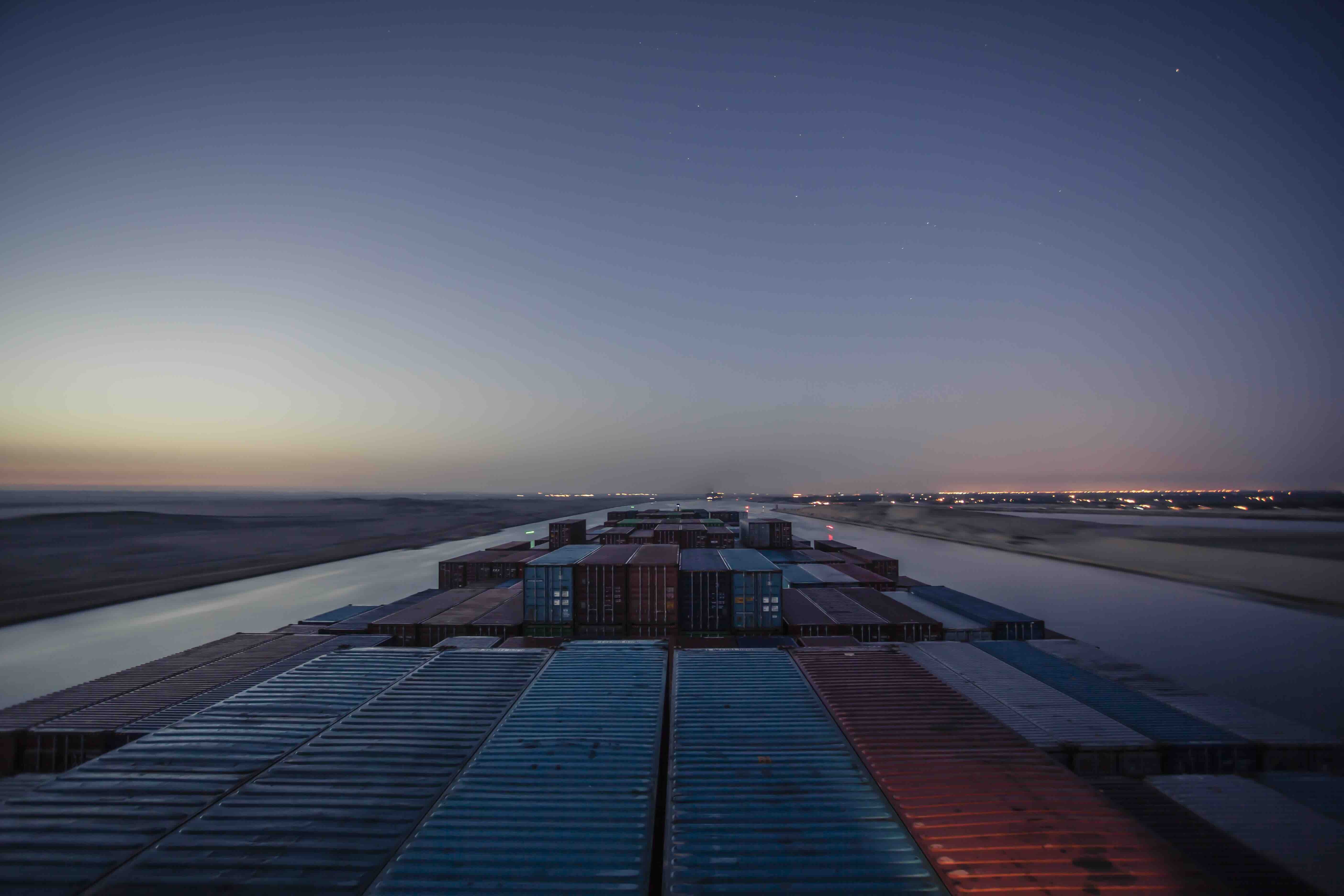
INFOGRAPHICS. American and European ports have returned to growth in 2024, at a steady pace for the former and more moderate for the latter. Their Asian counterparts have mostly benefited from renewed Western and intra-Asian demand.
1/ The global Top 20
In 2024, the world's top 20 ports generated a consolidated traffic of 414.6 million TEUs, an increase of 7.1% compared to the previous year.
Asian ports continue to dominate the global port scene, with 14 establishments among the top 20. Chinese ports took 4 of the top 5 places in the ranking and 6 of the top 10 spots. World number one, Shanghai crosses the very symbolic mark of 50 million TEUs.
The 8 Chinese ports in the Top 20 generated 55.6% of the combined traffic of the world's 20 biggest ports. This is one less than in 2023. Beibu Gulf, which had joined the Top 20 last year, left it in 2025 pushed out by the arrival of Long Beach. The US port has benefited from strong demand that has boosted its imports. The development of Beibu Gulf remains nevertheless favourable, with double-digit growth.
Hong Kong, on the other hand, continues to lose ground. It is one of the few ports in the Top 20 to record a drop in its containerised traffic in 2024, and this was already the case in 2023 (-14%) and 2022 (-6.9%). As such it falls below the 14 million TEU mark and leaves the Top 10, and is now behind Port Kelang and Rotterdam. As a result the number one port in Europe moves up a place to come in at 11th position. Antwerp-Bruges, the second European port in the Top 20, has also gained a place, taking advantage of the decline of the Chinese port of Xiamen. Laem Chabang and Kaoshiung lose some ground despite honourable growth. This is due to the exceptional growth of US ports in 2024. Finally, Tanger Med, the first African port to join the Top 20 last year, confirms its position and even gains two places.
2/ European Top 10
Cumulative container traffic from the Top 10 European ports stood at 65 million TEUs in 2024, posting growth of 5.7% in 2024, after a decline of 5.5% the previous year. All establishments benefit from the market rally, with the exception of Piraeus and Algeciras.
North Sea Ports
Rotterdam and Antwerp-Bruges, the only two European ports to exceed 10 million TEUs, confirm their dominance.
- Rotterdam recorded an increase of 2.8% in number of TEUs, and 2.5% in tonnage, with a total of 133.4 million tonnes treated. In terms of imports, traffic increased by 3.2% in tonnage (72.7 M tonnes) and by 3.5% in number of TEUs (7.2 million). For exports, the increase was 1.6% in containerised tonnage (60.7 million) and 2% in number of TEUs (6.6 million). “The growth in the container segment can be attributed to increased European consumption. Wage indexation and declining inflation led to higher disposable income and increased demand for consumer goods and food” the port authority said.
- Antwerp-Bruges is growing even more dynamically than its Dutch counterpart. Moreover, container traffic has been the driving force of its overall growth in 2024, with an increase of 8.9% in tonnage and 8.1% in TEUs. The port authority of Antwerp-Bruges claimed a market share of 30.6% on the Hamburg-Le Havre route during the first nine months of 2024, a gain of 0.7%. The refrigerated container segment, which represents 6% of total container traffic, recorded a particularly good performance with an increase of 9.2%.
The top three of the European Top 10 is completed by a third North Sea port, Hamburg. Growth in containerised traffic was limited to 0.9%, with a total of 7.8 million TEUs (77.5 million tonnes out of the 78.7 Mt processed by the German port in 2024). Hamburg suffered from Germany’s economic difficulties. In addition, the port suffered the impact of the conflict in the Red Sea. The lengthening of transit times has led to changes in routes, resulting in a decrease in Megamax calls in Hamburg. The phenomenon was partly compensated: "Per-call throughput volumes at the Port of Hamburg increased significantly Container vessels in the Megamax class therefore handled well over 10,000 TEU on average. This corresponds to an increase of more than 20 percent," port authorities said. Another positive element to note in 2024: Full container traffic, which accounts for about 87% of the total, increased by 1.6% to 7.8 million TEUs. The second German port in the Top 10, Bremen-Bremerhaven, has seen a more favourable trajectory with growth of 6.3%.
The only French representative in the Top 10, of which it closes the ranking is Haropa. It combines the ports of Le Havre, Rouen, and Paris, and has regained the ground lost in 2023. With an increase of 18.7%, it sets the record for growth among the North Sea ports and the Top 10, and goes past the 3 million TEU mark. “Transshipment is growing by 56% compared to 2024 and thus registers its most important level in 5 years,” says the port authority. The second French North Sea port, Dunkirk, has managed to slow the decline in container activity, but not to stop it. Traffic was 653,000 TEUs, down 2%.
Mediterranean
On the Mediterranean seaboard, Spanish ports continue to assert their dominance. In 2024, their activity was boosted by the disruption in the Red Sea. The attacks on merchant ships by Yemen’s Houthi rebels led shipping companies to circumvent Africa via the Cape of Good Hope, boosting transshipment traffic. According to Puertos del Estado, the public guardianship body of Spanish ports of General Interest, transshipment traffic jumped overall by 15.1% in 2024, to 9.7 million TEUs. In Valencia, Spain’s No. 1 port for containerised traffic, transshipment traffic grew by 17.3%, reaching 2.8 million TEUs. But in this market segment, the most spectacular growth among the Spanish ports in the European Top 10, is attributed to Barcelona: up 31.9% to 1.7 million TEUs. Valencia and Barcelona also benefited from a growth in import-export activity, even if it was more moderate.
The results were more attenuated for the port of Algeciras, with a growth of 2.8% on transshipment, and an erosion of 0.5% of the overall container activity. Algeciras nevertheless retains a solid 5th position in the European Top 10, ahead of another Mediterranean port that has suffered a great deal from the situation in the Red Sea: Piraeus. The Greek port recorded the strongest decline in the Top 10: -7,8%. After a difficult start in 2024, also due to the situation in the Red Sea, the Italian port of Gioa Tauro has redressed its situation and recorded growth of 11% compared to 2023.
Also benefiting from the diversion of traffic via the Cape of Good Hope, Marseilles recorded a growth of 9%, with a total of 1.45 million TEUs treated in 2024. But this is not enough to allow the number one French port on the Mediterranean seaboard to enter the Top 10.
3/ US Top 10
U.S. ports experienced a dramatic recovery in 2024, taking advantage of the drop in inflation that boosted demand again. The Top 10 port structures recorded cumulative traffic of 51.3 million TEUs, up 13.1% compared to 2023.
The United States’ top maritime gateway, the Los Angeles/Long Beach ecosystem is more than ever galloping in the lead with cumulative traffic of nearly 20 million TEUs, up 19.8% from the previous year.
- Los Angeles retains the top spot and has reached the milestone of 10 million TEUs. Full containers represent 5.3 million TEUs for imports (+20.6%) and 1.5 million for exports (+15.7%).
- There is a slightly different pattern at Long Beach: The volume of full containers of imports also jumped 24.3% to 4.7 million TEUs. On the other hand, full containers for export showed a decline of 5.9% to 1.2 million TEUs.
- The ports of Seattle and Tacoma also performed well with overall growth of 12.3%, full container traffic of imports up 19.6% to 1.3 million TEUs, and full container traffic for exports up 8.1% to 636,507 TEUs. They are being penalised by the slight erosion of domestic traffic (-1% to 730,488 TEUs), as total international traffic increased by 16.7% to 2.6 million TEUs.
- Oakland, finally, does not quite regain the ground lost in 2023, with growth of 9.5% in 2024 against a decline of 11.6% the previous year. Nevertheless, full container traffic is satisfactory, with growth of 15% for imports (964,240 TEUs) and 5.4% for exports (776,102 TEUs).
East Coast
East Coast ports evolved in a disrupted environment in 2024, due to the renegotiation of the next 6-year framework agreement governing relations between handling companies and port workers. Despite this, all East Coast ports in the Top 10 are growing.
- The number one port on the East Coast, New York did not rival its record of 2022, during which it had benefited from the traffic delay of the congested West Coast. It nevertheless confirmed its solid 3rd place on the podium, with growth of 11.4%. The port handled 4.4 million full TEUs for imports (+11.2%) and 1.3 million for exports (+5.4%).
- Savannah has risen well above the threshold of 5 million TEUs with an increase of 12.3%, boosted by results in full containers for imports (+14% to 2.7 million TEUs), compared to a more modest increase of 3% to 1.4 million TEUs of full containers for exports.
- Houston is pleased to have broken a historic record in terms of containers processed in 2024 and aims to go further thanks to the Houston Ship Channel expansion project that will allow neopanamax vessels of between 15,000 and 17,000 TEUs to dock at the Bayport container terminal. This port has the singularity of being one of the most balanced in terms of import and export, with a total of 1.9 million full TEUs imported in 2024 (+6.3%) and 1.5 million exported (+7.9%).
- The port of Norfolk (Virginia) also relies on container activity. It is currently conducting modernisation work to enable it to have three maritime terminals capable of handling the largest vessels by 2027. However, performance remained quite modest in 2024 in the full container segment, with an increase of 6.6% for imports and 3.4% for exports. It is therefore above all empty container traffic that boosted the number of TEUs in 2024.
- The Port of Charleston is characterised by its moderate growth rate of 0.6%. The import of full containers increased by 2.1% to 1.3 million TEUs while the export of full containers declined by 6.8%.
- Growth is also lower than the average of the Top 10 in Jacksonville, but the difference in the fiscal year dates does not allow for an accurate comparison with its counterparts.
4/ China's Top 10
The publication of the 2024 figures for Chinese ports shows a revision of the 2023 results for some of them. Based on this revised data, the top 10 Chinese ports experienced an overall growth of 7.1%, with cumulative traffic of 239.1 million TEUs in 2024. The strongest correction concerns Qingdao, whose growth was limited to 2.8% based on the 2023 figures initially published. Guangzhou also posted an increase of 3.9%, compared to 2.6% based on previous 2023 results.
The TOP 10 published by the Chinese Ministry of Transport for mainland ports does not include the port of Hong Kong.
The Chinese and world’s number 1 port, Shanghai, is the first to pass the milestone of 50 million TEUs processed, thanks to a growth of 4.8%. About 200 km south, Ningbo-Zhoushan is approaching 40 million TEUs thanks to a double-digit increase. Shenzhen completes the podium by also showing good growth, unlike its neighbour Hong Kong (see the World Top 20).
In the rest of the ranking, we note the good performance of the Beibu Gulf port ecosystem, which includes three ports located in coastal cities in the Guangxi Zhuang region. Traffic increased by 12.4% in 2024, after having already increased by 14.2% in 2023 and 16.8% in 2022, benefiting from the development of intra-regional flows. Conversely, Xiamen stands out as the only mainland port in China in the Top 10 to suffer an erosion of its traffic.
Our latest articles
-
5 min 12/12/2025Lire l'article
-
2025 review of road transport in Europe
Lire l'article -
Return of shipping via Suez: the surprising silence of shippers
Lire l'article



